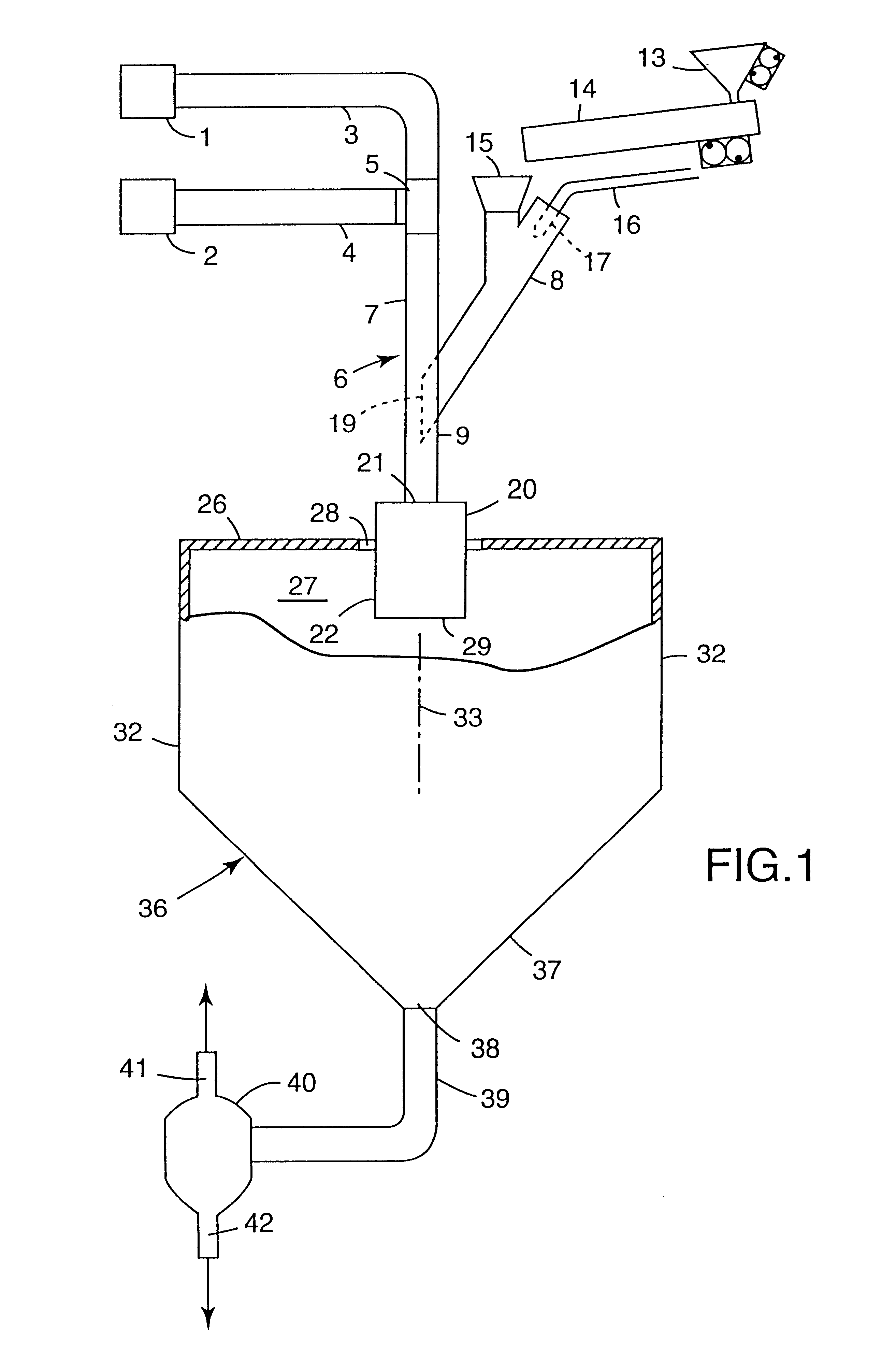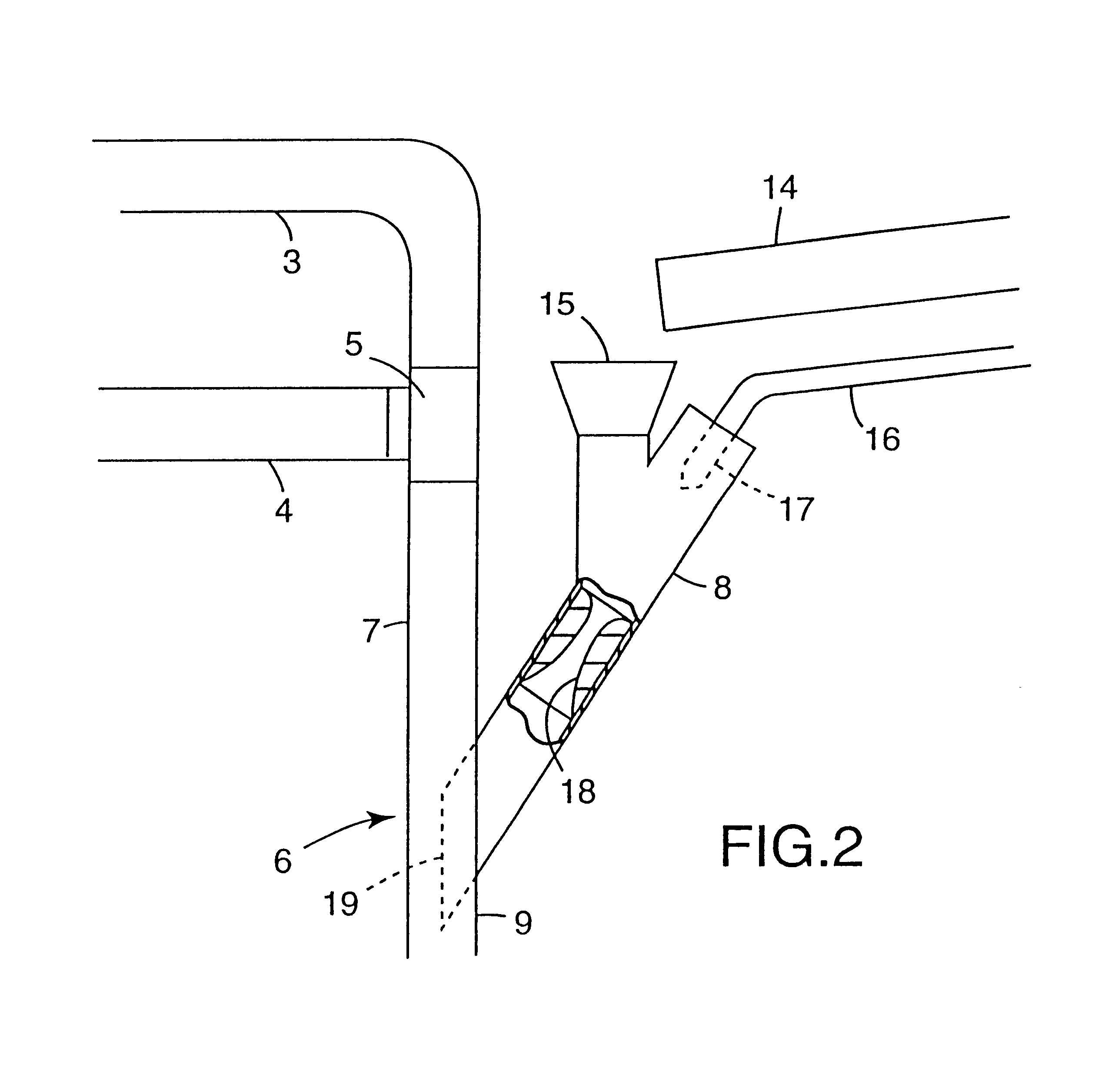Fused glassy particulates obtained by flame fusion
a technology of fused glass and flame fusion, which is applied in the direction of synthetic resin layered products, chemical/physical processes, natural mineral layered products, etc., can solve the problem that the geometry of the gilbert combustion chamber is not disclosed in the patent, and the composition of the direct fusion product is not uniformly similar. it is not suitable for mass production,
- Summary
- Abstract
- Description
- Claims
- Application Information
AI Technical Summary
Benefits of technology
Problems solved by technology
Method used
Image
Examples
example 1
800 grams of Kansas volcanic ash (72.8% SiO.sub.2 ; 14.6% Al.sub.2 O.sub.3 ; 5.8% K.sub.2 O; 3.9% Na.sub.2 O; 0.75% Fe.sub.2 O.sub.3 ; 0.28% CaO; 2% H.sub.2 O) is placed in a jar mill with 20 grams of hexamethyldisilazane and 1500 grams of 1 / 4" alumina balls. After tumbling for ten hours the ash is recovered as a free-flowing powder with 90 percent of the somewhat platy, irregularly shaped, particles having a diameter of less than 10 microns and a density of 2.5 g / cc.
Into the apparatus of FIGS. 1 and 2, air is metered to the oxygen-containing gas pipe 3 at about 270 ft..sup.3 / hr (cubic feet per hour at 20.degree. C.). Natural gas, with a heating value of 1,000 B.T.U. / ft..sup.3 is separately metered and aspirated into pipe 3 from fuel delivery pipe 4 at junction 5 at about 35 ft..sup.3 / hr. An additional 80 ft..sup.3 / hr. of air is injected from supply pipe 16 and nozzle 17 through venturi 18 into the feed entry leg 8 of Y 6.
Over a period of about 6.6 minutes, one hundred grams of t...
example 2
Synthetic precipitated silicas products: "FK320"; "FK16"; "SIPERNAT 22"; "SIPERNAT D17"; and "EXTRUSIL", and a synthetic alumino silicate, "SIPERNAT 44", are obtained from the Degussa Corporation. Each of these powders, which contain from 3 to 22 percent water, is dispersed into a stoichiometric flame of air and natural gas in the above described manner to produce powders with an abundance of spherical particles with average particle diameters of a few microns. Once again voids are evident in some of the otherwise spherical particles.
Industrial Applicability
It is expected that products according to the invention will be supplied to industry as compositions of matter that are composed substantially of the solid particles, including generally ellipsoidal particles with or without particles of other shapes. However, due to the diverse practical uses of the particulate products, it is expected that compositions of matter of the present invention, referred to in the accompanying claims, ...
PUM
| Property | Measurement | Unit |
|---|---|---|
| Fraction | aaaaa | aaaaa |
| Fraction | aaaaa | aaaaa |
| Fraction | aaaaa | aaaaa |
Abstract
Description
Claims
Application Information
 Login to View More
Login to View More - R&D
- Intellectual Property
- Life Sciences
- Materials
- Tech Scout
- Unparalleled Data Quality
- Higher Quality Content
- 60% Fewer Hallucinations
Browse by: Latest US Patents, China's latest patents, Technical Efficacy Thesaurus, Application Domain, Technology Topic, Popular Technical Reports.
© 2025 PatSnap. All rights reserved.Legal|Privacy policy|Modern Slavery Act Transparency Statement|Sitemap|About US| Contact US: help@patsnap.com


